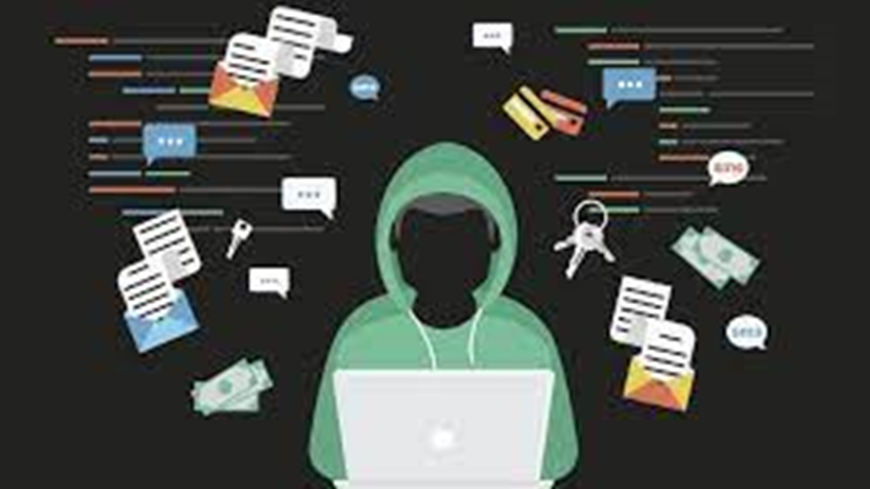…the responsibilities of parents and caregivers!
Introduction
Parents and caregivers play a crucial role in ensuring the cybersecurity of children. As young individuals increasingly use digital devices and the internet, it’s essential to educate and protect them from online threats. By taking an active role in their children’s digital lives and providing guidance and support, parents and caregivers can help ensure that kids navigate the online world safely and responsibly. This proactive approach to cybersecurity fosters a secure and positive digital environment for children to learn and grow.
The Internet accompanies children wherever they go, making cybersecurity for children an increasingly crucial issue to address.
Teaching kids how to detect cyber threats is essential for their online safety. Here are some age-appropriate tips to help kids recognize potential cyber threats:
1. Stranger Danger: Teach kids not to talk to or share personal information with people they don’t know online. Explain that just like in the real world, it’s not safe to trust strangers on the internet.
2. Suspicious Messages: Instruct kids to be cautious of messages or emails from unknown sources. If they receive a message that seems strange or makes them uncomfortable, they should show it to a trusted adult without clicking on any links or responding.
3. Phishing Awareness: Explain the concept of phishing. Let kids know that sometimes people pretend to be someone else to trick them into sharing their personal information. Teach them not to click on suspicious links or download attachments from unknown sources.
4. Too Good to Be True: Help kids recognize that offers that sound too good to be true often are. If they see ads or messages promising big prizes, money, or free stuff, they should be skeptical and consult a trusted adult.
5. Pop-Up Ads: Explain that not all pop-up ads are safe. Teach kids to never click on pop-up ads, especially if they are offering free downloads or asking for personal information.
6. Privacy Settings: Show kids how to adjust privacy settings on websites, games, and social media accounts. Help them understand the importance of keeping their personal information private and not sharing it with everyone online.
7. Secure Websites: Teach kids to look for “https://” in the web address when they visit websites. Explain that this means the site is secure, and it’s safer to enter personal information on these sites.
8. Online Friends: Encourage kids to only accept friend requests or messages from people they know in real life. Explain that not everyone online is who they claim to be.
9. Password Safety: Teach kids the importance of strong, unique passwords for each of their accounts. Explain that they should never share their passwords with anyone, even friends.
10. Reporting: Let kids know that if they ever see something online that makes them uncomfortable or suspicious, they should immediately report it to a trusted adult, such as a parent or teacher.
11. Trust Your Feelings: Explain that if something online doesn’t feel right or makes them uncomfortable, they should trust their instincts and seek help from a grown-up.
12. Cyberbullying Awareness: Discuss cyberbullying and explain that if they experience or witness bullying online, they should report it to a trusted adult or a teacher.
It’s crucial to maintain open communication with kids about their online experiences and concerns. Encourage them to come to you with any questions or worries they have while using the internet. By educating children about these potential threats and fostering a sense of vigilance, you can help them navigate the digital world safely.
Cybersecurity Word Finder:
Together with your kid(s), find the following words and explain to them. Kid-friendly definitions have been provided below to guide parents explain these terms using the language the kids can understand and relate with.
BACKUPS CYBER DEVICE EMAIL
FILES HACKER ONLINE PASSPHRASE
REPORT SCAM SECURITY WEBSITE
WIFI

Explaining these words to kids in a simple and understandable way is essential to help them grasp the concepts. Here are kid-friendly explanations for each term:
1. Backups: Think of backups as making a copy of your favorite toy or book. It’s like having a spare just in case something happens to the original.
2. Cyber: Cyber means anything related to computers and the internet. So, when we talk about cyber, we’re talking about the cool stuff that happens on our computer screens.
3. Device: A device is any gadget or machine that you can touch or hold, like your tablet, phone, or computer. It’s what you use to play games or watch videos.
4. Email: Email is like sending a letter, but it’s done on the computer. You write a message and send it to someone else’s computer, and they can read it there.
5. Files: Files are like the pages in a book. They hold all the information you save on your device, like your drawings or homework.
6. Hacker: A hacker is like a computer detective. Some hackers are good and help keep things safe, while others are naughty and try to do bad things on the computer.
7. Online: Online means you’re connected to the internet. It’s like having a super highway that lets you play games, watch videos, and learn cool stuff on your device.
8. Passphrase: A passphrase is like a secret code or password. It keeps your stuff safe on the computer, like a magic word only you know.
9. Report: To report means telling a grown-up or a trusted person when something on the internet doesn’t feel right or makes you uncomfortable.
10. Scam: A scam is like a tricky game someone plays to try and take something from you or trick you into doing something you shouldn’t. Always be careful!
11. Security: Security is like having locks on the doors of your house. It helps keep your computer and information safe from naughty hackers and bad stuff.
12. Website: A website is like a fun place on the internet where you can read stories, play games, and learn new things. It’s like a digital playground!
13. WiFi: WiFi is like magic internet waves that make your device work without any wires. It’s how your tablet or computer connects to the internet at home.
Explaining these terms in simple and relatable ways will help kids understand the basics of cybersecurity and technology in a friendly and accessible manner. Continuous cybersecurity education is key for parents and caregivers to help their children.
Communication in cyber education is vital for kids as it ensures they understand the digital world’s complexities, risks, and opportunities. Open dialogue allows them to ask questions, seek guidance, and share concerns, fostering a safe online experience. It empowers them to make informed choices, recognize cyber threats, and protect their privacy. Furthermore, communication builds trust between kids and adults, encouraging children to turn to trusted sources when facing online challenges. Through ongoing conversations, children can learn to navigate the digital landscape responsibly and develop critical thinking skills, ultimately preparing them for a secure and enriching online journey.
Author: Emmanuel K. Gadasu
(CEH, CDPS, CIPM, BSc IT, MSc IT and Law*, LLB*)
(Data Protection Officer, IIPGH and Data Privacy Consultant and Practitioner, Information Governance Solutions)
For comments, contact author via ekgadasu@gmail.com or Mobile: +233-243913077





